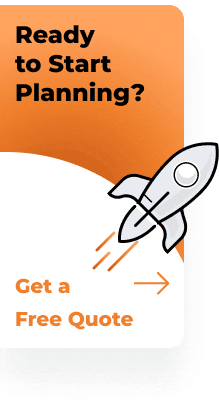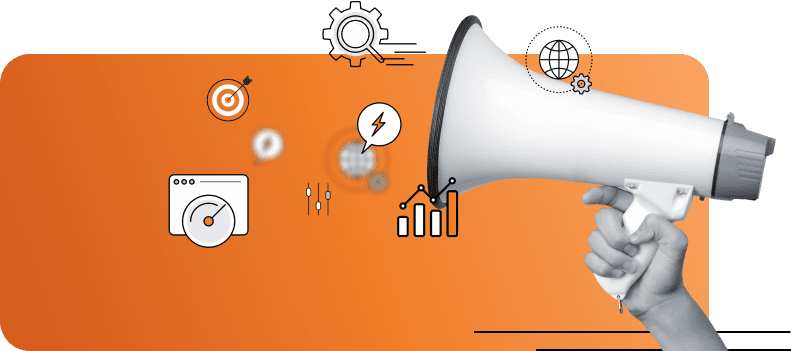Are you looking for an effective way to attract more local customers and grow your business? Inbound digital marketing is one of the most powerful tools available, and when applied correctly can help you drive qualified leads, generate loyal customers, and increase revenue over time.
By building trust with potential customers through engaging content creation, you can create a successful inbound marketing strategy that engages current customers while reaching out to new ones.
With this guide on how to leverage data-driven inbound marketing strategies, we’ll explore these topics further so that you know it is necessary to do just that!
Overview of Inbound Marketing and Its Benefits
In today’s ever-changing marketing landscape, businesses must stay ahead of the curve and connect with their target audience in a meaningful way. This is where inbound marketing comes into play.
Inbound marketing is all about attracting potential customers rather than interrupting them with traditional advertising methods. The inbound marketing definition involves:
- Creating valuable content
- Engaging with your audience on social media
- Optimizing your website for SEO
By implementing an inbound campaign and strategy, you can build trust and credibility with your audience, resulting in more qualified leads and ultimately, more sales. Types of inbound marketing include:
- Content marketing
- Social media marketing
- Email marketing
- Search Engine Optimization
By utilizing these strategies, businesses can create a cohesive and effective inbound marketing plan that will benefit their overall marketing efforts.
Content Creation Strategies to Attract Customers
In today’s digital age, it’s essential to have a strong content creation strategy to attract and retain customers. But what is the inbound marketing definition? Inbound marketing is all about attracting potential customers to your brand rather than pushing your products or services onto them.
It’s a customer-centric approach that focuses on building relationships and providing value. Creating an inbound campaign involves a comprehensive strategy that includes:
- Defining your target audience
- Identifying their pain points
- Creating content that solves their problems
There are several types of inbound marketing, all of which can be integrated into a successful inbound marketing strategy. By focusing on your customers’ needs and preferences and providing them with valuable content, you can attract and retain engaged and loyal customers.
Social Media Strategies for Engagement
Social media strategies for engagement are crucial to any inbound marketing campaign. Inbound digital marketing is all about attracting your target audience and building lasting relationships with them.
This marketing approach allows you to create relevant content that speaks to your potential customers’ needs, goals, and pain points, instead of interrupting them with irrelevant ads.
To achieve this, you need a well-thought-out inbound marketing strategy that includes different types of inbound marketing. Your social media strategy should focus on:
- Creating engaging and shareable content
- Encouraging conversations
- Responding to your followers promptly
By doing so, you can turn your followers into loyal customers and brand advocates who will spread the word about your business.
Conversion Optimization Techniques for More Sales
As the world becomes increasingly digital, businesses are turning to inbound marketing strategies to attract, engage, and delight customers. But what is the inbound marketing definition?
Inbound digital marketing refers to an approach where businesses create helpful and valuable content that attracts potential customers to their websites or social media channels.
From there, they can nurture leads with relevant messaging and convert them into customers. To make the most out of their inbound campaign, businesses can employ a variety of techniques such as:
- A/B testing landing pages
- Personalizing content
- Target specific segments of their audience
By optimizing each step of the customer journey, businesses can increase their chances of closing more sales and building long-term relationships with their customers.
Analytic Tools to Track and Understand User Behaviour
As the internet continues to evolve and technologies become more complex, it’s becoming increasingly important for businesses to understand user behaviour. With the right toolset, you can:
- Track how users are interacting with your website
- Learn which channels are driving the most traffic
But how do you get started with analytics? To answer that question, it’s important to first define what we mean by inbound digital marketing.
Simply put, inbound marketing is a strategy that focuses on attracting customers through valuable content and experiences. By offering solutions to customer problems, you can build a relationship with your audience and generate leads.
To execute an inbound campaign, you need to have a clear understanding of the different types of inbound marketing available. Once you’ve established your strategy, you can start to use analytical tools to track metrics like:
- Bounce rate
- Conversion rate
- Engagement rate
By identifying where users are spending time on your site, you can optimize your content and improve the overall user experience.
Tips on Creating a Successful Data-Driven Inbound Strategy
Inbound marketing has revolutionized the way businesses attract, convert, and retain customers. Simply put, the inbound marketing definition is about creating high-quality, valuable content that pulls people towards your brand and establishes trust and authority.
But this is easier said than done. For a successful data-driven inbound strategy, you need to go beyond the inbound marketing definition and develop a comprehensive inbound campaign. This includes:
- Identifying your target audience
- Mapping their buyer’s journey
- Selecting the right types of inbound marketing
- Measuring the impact of your inbound marketing strategy with data-driven metrics
The key to success is to stay focused on your audience’s needs and interests and create content that resonates with them at every stage of the journey. By doing so, you’ll be able to attract, engage, and convert more qualified leads into loyal customers.
By utilizing data-driven inbound digital marketing strategies such as content creation, social media, and conversion optimization, you have the opportunity to reach new potential customers and turn them into loyal buyers.
Implement these strategies consistently and use analytics tools to track user behavior which will give you the insight you need to know whether or not your efforts are paying off. Start small, be consistent, test often and make sure your portfolio includes lots of engaging content.
Doing so will ensure that your data-driven inbound marketing strategy is successful and ultimately rewards you with a variety of long-term benefits for your business. So don’t wait, take action now, and begin your data-driven inbound marketing journey today!









